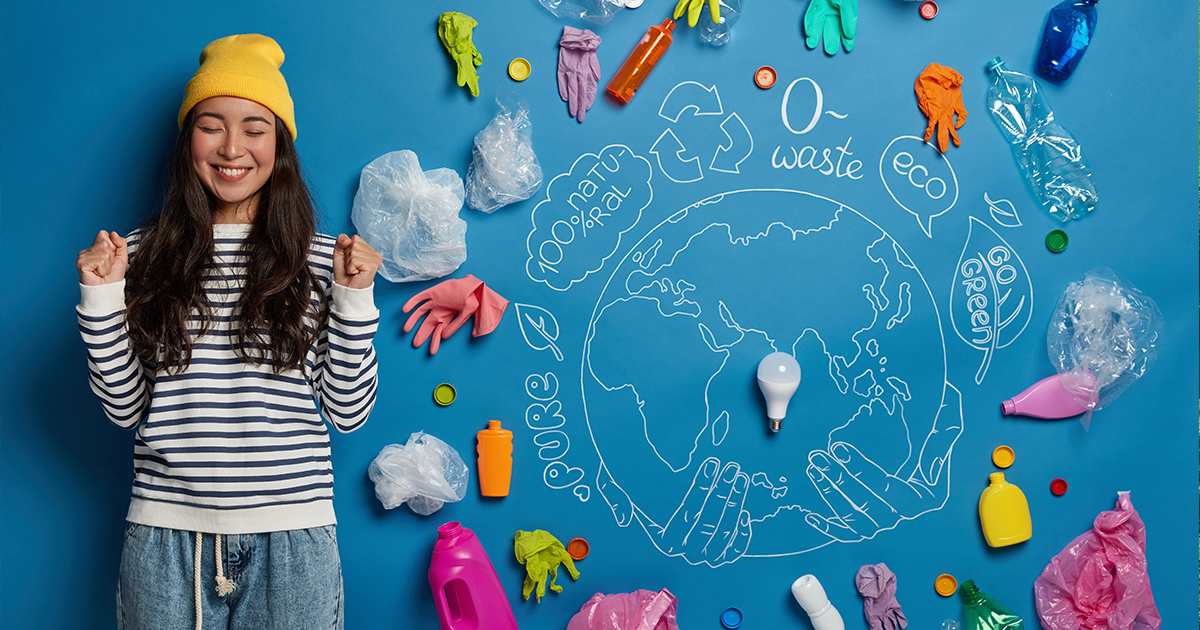Hyundai Motorstudio Senayan Park
Hyundai Motorstudio Senayan Park
Newsroom
The official news from Hyundai Motorstudio Senayan Park and a collection of innovative articles on mobility and sustainability here.
-
Plastic Upcycling: Creativity in Reducing Plastic Waste
- Hyundai Motorstudio Senayan Park Senayan Park 2025.06.30
-
Plastic waste is one of the biggest environmental challenges today. Hard-to-decompose plastics accumulate in landfills, rivers, and oceans, threatening ecosystems and human health. However, from this problem was born a creative solution called plastic upcycling. With this approach, plastic waste is not only reduced, but also transformed into high-value and useful products.
The Problem of Plastic Waste and Its Impact
Conventional plastics are widely used because of their lightweight, durable, and inexpensive properties. However, this advantage is directly proportional to the serious problems it causes. Plastics take hundreds of years to decompose naturally, accumulating and polluting the environment.
In Indonesia, marine plastic waste is a big concern. According to data from National Geographic, Indonesia is one of the largest producers of plastic waste that pollutes the oceans. This plastic waste endangers marine life, damages habitats, and can enter the human food chain through the consumption of fish and other seafood.
In addition, plastic production uses fossil fuels that produce high carbon emissions. When burned improperly, plastic releases toxic substances such as dioxins, which have adverse effects on public health, including the risk of cancer and respiratory distress.
Plastic Upcycling Concept
Upcycling is the creative process of turning waste into new products with higher value. Unlike recycling which often lowers the quality of materials, upcycling uses creativity to create functional or aesthetic items from plastic waste.
Examples of plastic upcycling include making plant pots from used bottles, bags from plastic bags, to artwork from bottle caps. This process does not require high technology and can be done at home, thus providing a wide opportunity for the community to contribute directly.
Upcycling also encourages environmental awareness because it invites people to see waste as a resource, not waste that must be thrown away.
Benefits of Upcycling for the Environment
Plastic upcycling provides many positive benefits, including:
- Reducing Plastic WasteBy converting waste into new products, the volume of plastic waste that ends up in landfills and the environment is reduced.
- Saves Energy and ResourcesThe upcycling process typically uses less energy than the production of new or conventional recycled plastics.
- Reduces Greenhouse Gas EmissionsBy reducing the need for the production of new plastics, upcycling helps reduce carbon emissions that contribute to climate change.
- Increasing Awareness and CreativityUpcycling invites people to care more about the environment and develop creativity in waste utilization.
- Creating New Economic ValueUpcycling products can be a source of income, especially for small businesses and the creative community.
Creative Tips for Plastic Upcycling at Home
Plastic upcycling can be started with simple steps at home. Here are some ideas that are easy to do:
- Plant Pots from Plastic BottlesCut used plastic bottles into different sizes, paint them with bright colors, and use them to grow ornamental plants or vegetables. These pots can be hung or placed on the balcony.
- Storage Bins of Large Plastic BottlesLarge plastic bottles can be converted into stationery, kitchenware, or children's toys.
- Bags from Used Plastic BagsUsed plastic bags can be sewn into a strong and durable shopping bag. This bag making tutorial is widely available on the internet and is easy to learn.
- Decorative Lights from Plastic Bottle CapsCollect plastic bottle caps, arrange them and glue them into unique and attractive chandeliers or wall decorations.
- Educational Crafts for ChildrenInvolve children in making crafts from plastic waste to teach the importance of protecting the environment from an early age.
In addition, always make sure that the plastic to be upcycled is cleaned so that the final product remains hygienic and durable.
Examples of Plastic Upcycling Initiatives in Indonesia
Various communities in Indonesia have started adopting upcycling as part of the plastic waste reduction movement. For example:
- Waste Banks in various cities that collect plastic waste to be processed into creative products, as well as provide education to the community.
- Creative small businesses that make bags, wallets, and accessories from used plastic, open up economic opportunities while reducing waste.
These initiatives show that upcycling is not only beneficial to the environment, but can also be a source of income and community empowerment.
Why Is Upcycling Important for the Future?
With global plastic production on the rise, plastic waste management is the key to environmental sustainability. Upcycling offers a practical and creative solution to address this problem without having to rely entirely on complex and expensive recycling technologies.
In addition, upcycling changes people's perception of waste, from something useless to a valuable resource. In this way, upcycling can encourage a more environmentally conscious and sustainable lifestyle.
Conclusion
Plastic upcycling is a creative and effective step to reduce plastic waste while providing added value. By using plastic waste innovatively, we can reduce environmental pollution, conserve resources, and build a collective awareness of the importance of sustainability.
Start with simple steps at home and spread this inspiration to the surrounding environment. Together, we can create positive change for a cleaner and healthier earth.




